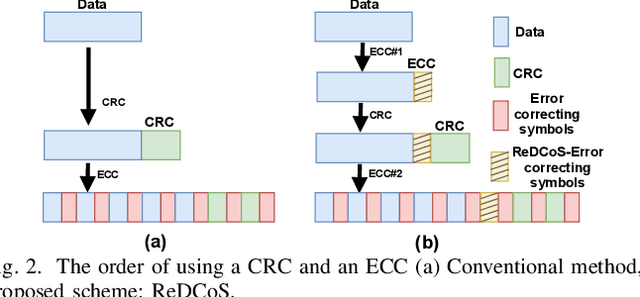Niloofar Yazdani
Energy Efficient Data Recovery from Corrupted LoRa Frames
Jul 19, 2021



Abstract:High frame-corruption is widely observed in Long Range Wide Area Networks (LoRaWAN) due to the coexistence with other networks in ISM bands and an Aloha-like MAC layer. LoRa's Forward Error Correction (FEC) mechanism is often insufficient to retrieve corrupted data. In fact, real-life measurements show that at least one-fourth of received transmissions are corrupted. When more frames are dropped, LoRa nodes usually switch over to higher spreading factors (SF), thus increasing transmission times and increasing the required energy. This paper introduces ReDCoS, a novel coding technique at the application layer that improves recovery of corrupted LoRa frames, thus reducing the overall transmission time and energy invested by LoRa nodes by several-fold. ReDCoS utilizes lightweight coding techniques to pre-encode the transmitted data. Therefore, the inbuilt Cyclic Redundancy Check (CRC) that follows is computed based on an already encoded data. At the receiver, we use both the CRC and the coded data to recover data from a corrupted frame beyond the built-in Error Correcting Code (ECC). We compare the performance of ReDCoS to (I) the standard FEC of vanilla-LoRaWAN, and to (ii) RS coding applied as ECC to the data of LoRaWAN. The results indicated a 54x and 13.5x improvement of decoding ratio, respectively, when 20 data symbols were sent. Furthermore, we evaluated ReDCoS on-field using LoRa SX1261 transceivers showing that it outperformed RS-coding by factor of at least 2x (and up to 6x) in terms of the decoding ratio while consuming 38.5% less energy per correctly received transmission.
 Add to Chrome
Add to Chrome Add to Firefox
Add to Firefox Add to Edge
Add to Edge